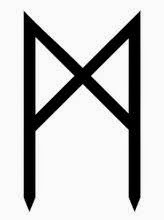To
speak to the Spirits of the Land, I went to the nearby railroad cut. On one
side of the tracks was a small park and on the other side, a large park with a
man-made lake. A pedestrian bridge crossed over the tracks to connect the two
parks. Running through my neighborhood, the railroad is a constant presence in
our lives. Meanwhile, the Land Spirits have accepted the railroad and often use
it to connect with people.
When
I arrived at the small park, I asked to be received by the Spirits of the Land.
While walking the path to the bridge, I gloried in the first day of Spring. It
was a warm day, whispering of life ready to reappear. As I approached the bench
by the bridge, a robin hopped out of the woods into the clearing. Cocking its
head towards me, the bird trilled a melody. I was welcomed by the Spirits of
the Land.
While
sitting at the bench, soaking up the warm sun, I waited for a spirit to speak
to me. Then freight train rattled on through bringing with it, the Being of the
Cut. Apparently this ancient Being enjoyed playing with the trains. The Being
also like watching people crossing the bridge back and forth.
The
Being of the Cut first noticed people when they blasted into its hill many
years ago. Curious, It approached the workers and were told that they were
Irish. The workers regarded the Being as one of “Sidhe,” although It did not
know what that meant. However, the Being did like that the workers always
respectfully greeted It. Afterwards, the Being became more kindly disposed to
people and their trains.
The
Being of the Cut told me that It knew me, and regarded me as an old friend. For
many years, I would come in the Spring to look for the bluets, growing amongst
the moss on the rocks at the cut. I also would search for the white and yellow
violets later on. The Being enjoyed my delight at finding these little flowers.
As the Being told me this, It settled around me like an old favorite blanket,
cozy and warm.
After
a while, I asked for a token of our bond.
Confused, the Being said, “Are not the bluets and violets, which are
soon to bloom, enough?” Embarrassed, I apologized for presuming too much.
Sitting for a while longer, I wanted to make sure that the Being was not
disappointed in me.
Walking
up the path to the road, I was surprised by a Promethea silk moth, a large
black moth with gold-silver trim. The moth danced in front of me and showed off
its gold-silver tips. Then a second one came and the two tangoed higher and
higher up through the trees. I was witnessing a mating dance. Then one of the moths
returned to rest on the ground, next to my feet. A few minutes later, the moth
flew around me, glimmering in the sun. After that, it flew off to rest in the
nearby leaf litter.
I
think that the Being wanted me to return and spend more time in its company. To
the Being, I was a friend. We shared in the joy of the first day of Spring.
Leaving, I felt whole, and eagerly awaited for the bluets to appear.











